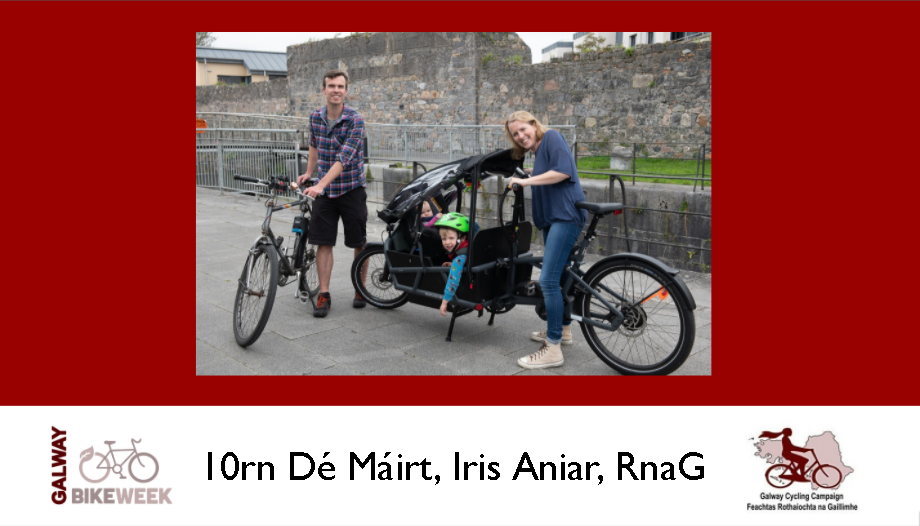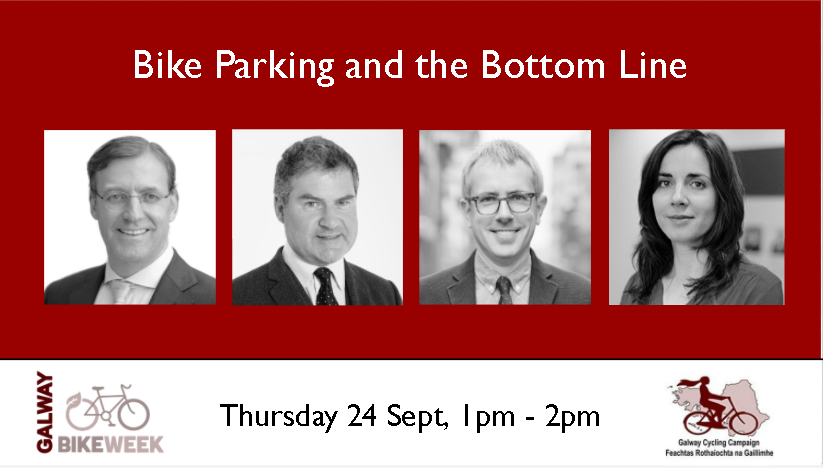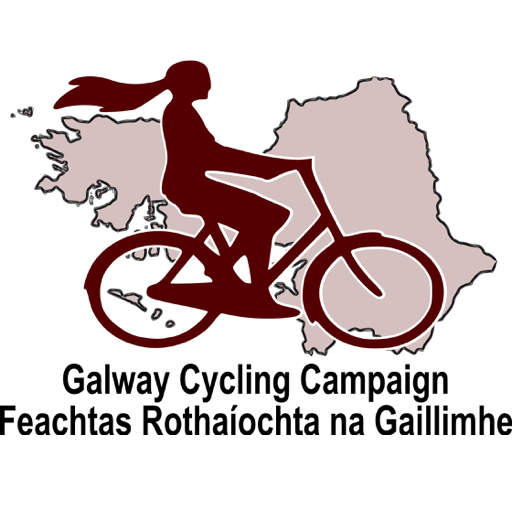Tag: parking
-

Raidió / Iris Aniar, Raidió na Gaeltachta
Beidh Neil Ó Laoghaire s’againne ar Iris Aniar ar Raidió na Gaeltachta Dé Máirt ag 10r.n. chun imeachtaí Seachtain na Rothar a phlé – Turas Rothair na mBan ‘Fancy’ – […]
-

Lunchtime webinar / Bike Parking and the Bottom Line with Dutch Ambassador, HE Adriaan Palm
The Embassy of the Netherlands, Dutch Cycling Embassy, Dublin Town, and Development Studies Association of Ireland at Trinity College Dublin join Galway Cycling Campaign to discuss Bike Parking and the Bottom […]
-
School Park and Stride graded D for effort
The Park and Stride initiative by Galway City Council in partnership with An Taisce-Green Schools is welcomed by the Galway Cycling Campaign and Galway Cycle Bus, yet they warn that […]
